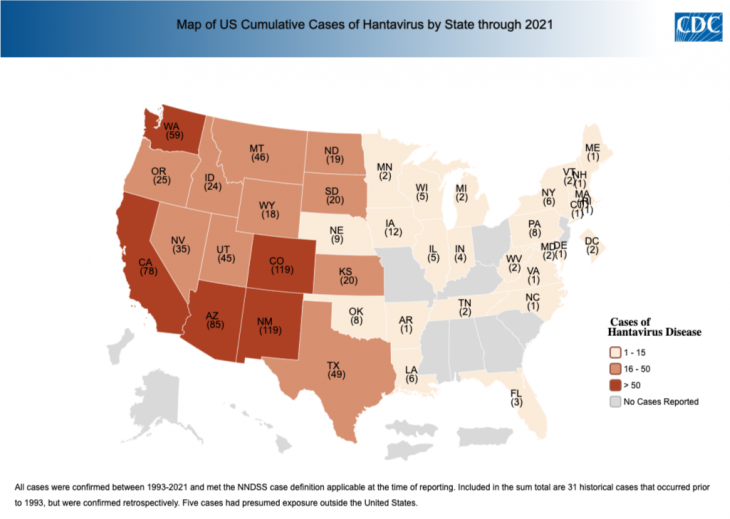Theoretical and empirical research has now convincingly identified strong linkages between human health, social dynamics, and the environment (Schmeller et al. 2020, Jimenez et al. 2021). The COVID-19 pandemic is the most recent, prominent example of this; however, greater contact between humans and wildlife has resulted in a variety of zoonotic diseases threatening human health (Goldstein et al. 2022, Prist et al. 2023). Environmental factors such as biodiversity loss, climate change, and habitat degradation are closely tied to the increase in the emergence of zoonotic illnesses, i.e., diseases that originate in animals (Schmeller et al. 2020). Some research has shown that animals that do well in human-impacted landscapes are more likely to be zoonotic hosts (Keesing et al. 2021), and humans are more likely to encounter those hosts in such regions (Plowright et al. 2021). A variety of other diseases and illnesses such as malaria, chronic diarrhea, parasitic infections, and tick-borne illnesses are all associated with environmental conditions.
Poverty, overpopulation, low levels of governmental support, and inadequate shelter are several of the many social factors that exacerbate humans’ risk of disease and illnesses (Semenza et al. 2022, Winck et al. 2022). Vulnerability is also higher for those involved in hazardous jobs like mining or those in regions of political instability. The field of social epidemiology emerged some 30+ years ago in recognition of the fact that an array of social factors is not only a major determinant of one’s disease risk but also a determinant of one’s ability to cope with and overcome illness (Diez Roux 2022).
Most broadly, the risk of disease and illness is a function of three dimensions—vulnerability (e.g., due to social factors); hazard (e.g., due to environmental factors); and exposure due to social or environmental factors (Semenza et al. 2022). The nexus of these three dimensions of risk is a major determinant of socio-environmental sustainability and resilience, as fully described in this SESYNC Explainer. In sum, enhancing and protecting health requires understanding and preparing for the complex causal dependencies between the environment and social dynamics.
- Recognize that understanding disease and illness requires moving beyond a focus on biomedical issues.
- Identify both environmental and social determinants of human health.
- Consider how the nexus of vulnerability, hazard, and exposure contribute to human health risks.
- Explore primary literature evidence for socio-environmental determinants of specific diseases.
Share the below map (also in the PowerPoint's Slide 1) and background information and then ask learners to speculate on the environmental and social factors that may help explain the distribution of hantavirus in the United States.
Background: Hantavirus pulmonary syndrome (HPS) is a viral disease that causes severe illnesses and can lead to death in humans. Rodents carry the virus, and thus, any environmental factor that influences rodent ecology influences the size of the viral “reservoir.” Deforestation, extensive agriculture, and changing weather or climate conditions in rural regions can lead to the expansion in rodent populations, as well as closer contact with and thus transmission to humans. The virus is present in rodent feces, saliva, and urine and is in aerosol form especially if people are cleaning out barns or other confined areas where there are nests.
For the Instructor: Some of the pattern of cases in the above figure is explained by historical periods of infection, especially a 1993 outbreak in the Southwest. The area had been in a drought for several years followed by heavy precipitation. Animals and plants thrived, people worked the fields, and deer mice had abundant food, so their populations were 10 times higher.
This lesson works best if learners complete it in groups that work on their own and then assemble to present cases. The lesson takes 50 to 75 minutes; if the former, have individuals complete step 6 below after the meeting (i.e., as an at-home assignment). For advanced learners, have them read and summarize the article by Semenza et al. 2022, "Climate Change and Cascading Risks from Infectious Disease." The instructor should cover PowerPoint slides 5–7 with these advanced learners, but they should go into more depth than what is in the slides.
-
(3 min.) Present the hook and have individuals jot down responses then prompt them to share in a brief group discussion.
-
(5 min.) Go over the short PowerPoint presentation. If advanced learners have read the article by Semenza, let them cover the material in more depth for the last three slides.
Document -
(3 min.) Divide learners into small groups of two or three and assign each group one of the articles in the below PDF. Be sure to distribute the articles so that all of them are covered. Learners are to use the articles as case studies to explore the social and environmental factors that influence disease or illness in humans. Learners may need to explore other online materials for some of the information requested in step 4.
Document -
(25 min.) For each article case study, learners should peruse the text and identify:
- The health impacts of the disease or illness on people
- The ecological/environmental factors that increase risk of infection and/or death along with specific examples for the disease/illness
- The social factors that increase risk of infection and/or death along with specific examples for the disease/illness
- Examples of combinations of the three dimensions of risk (vulnerability, hazard, and exposure) that may be threatening. Note that learners may use their own ideas or web searches if the article does not cover all three.
- One or more socio-environmentally informed ways to reduce the risk to people to the disease/illness. Learners may need to propose these.
-
(20–25 min.) Have each group give a 2–3-minute overview of what they found in response to step 4.
-
(5–7 min.) Have each learner write a meaty paragraph on the similarities and differences in the environmental and social factors associated with the various diseases they heard about during the meeting. Time permitting, learners could discuss their responses in the next session, or the instructor could assign learners to turn it in to them.
-
Social Epidemiology: Past, Present, and Future
This article describes the development of the field of social epidemiology. The field emerged in recognition of the importance of social factors influencing disease prevalence and outcome. It emphasizes research that helps shift the view of disease and illness as a purely biomedical issue. It describes the social patterning of disease, the need to take a systems perspective, and the move to a focus beyond the individual and on social capital; it also discusses intervention strategies.
Diez Roux, A.V. (2022). Social Epidemiology: Past, Present, and Future. Annual Review of Public Health, 43: 79-98. https://doi.org/10.1146/annurev-publhealth-060220-042648
-
Climate change and cascading risks from infectious diseases
This excellent article explains how vulnerability, hazard, and exposure determine risk. Furthermore, it summarizes how climate influences 30 infectious diseases’ impacts in the context of vulnerability, hazard, and exposure, as well as how the risk can cascade. It provides specific examples and includes risk maps under climate change for several diseases.
Semenza, J.C., Rocklöv, J., & Ebi, K.L. (2022). Climate change and cascading risks from infectious diseases. Infectious Diseases and Therapy, 11(4): 1371-1390. https://doi.org/10.1007/s40121-022-00647-3
-
IPBES Workshop on Biodiversity and Pandemics: Executive Summary
This summary is from a 2020 report prepared by the United Nations Intergovernmental Science-Policy Platform on Biodiversity and Ecosystem Services (IPBES). It explains how ecological disruption and exploitation of human resources have elevated the risk of pandemics. Among other topics, it provides bullet points on the link of disease to trade and humans’ wildlife consumption and agricultural expansion. It also discusses enabling factors and potential policies to reduce risk.
Intergovernmental Science-Policy Platform on Biodiversity and Ecosystem Services (IPBES). (2020). IPBES Workshop on Biodiversity and Pandemics: Executive Summary. IPBES. https://files.ipbes.net/ipbes-web-prod-public-files/2020-10/IPBES%20Pandemics%20Workshop%20Report%20Executive%20Summary%20Final.pdf

